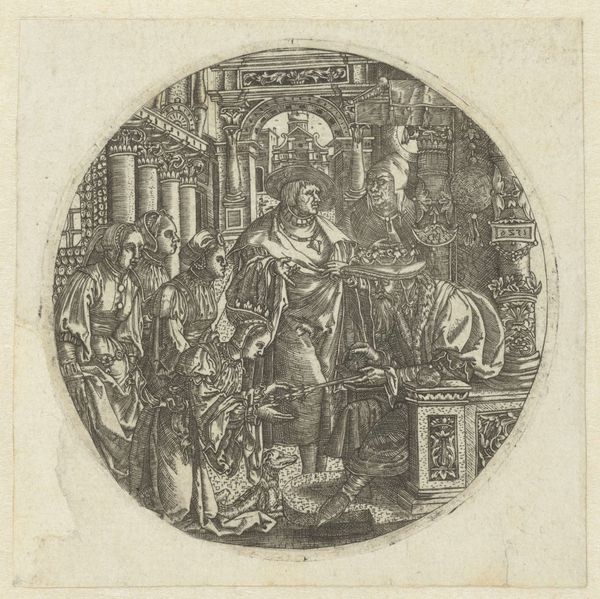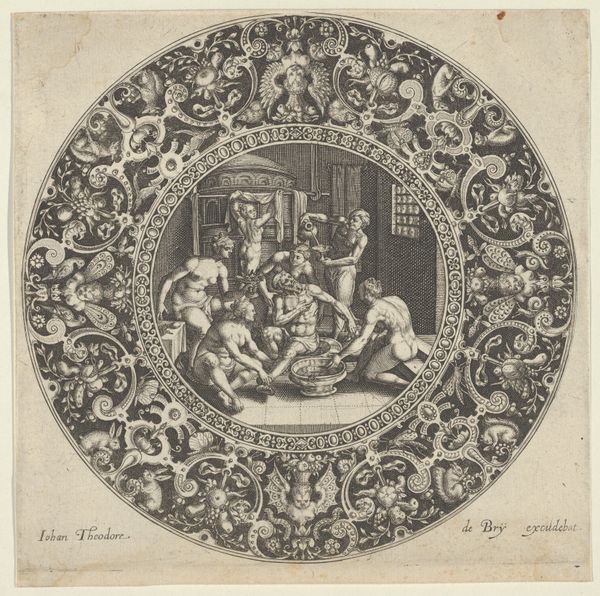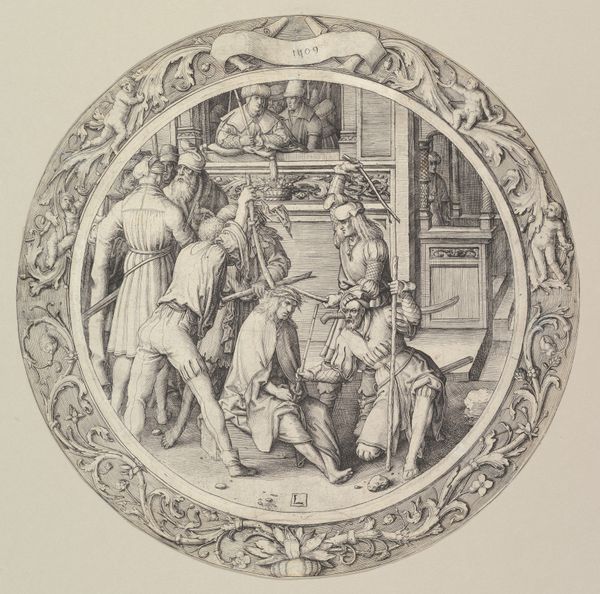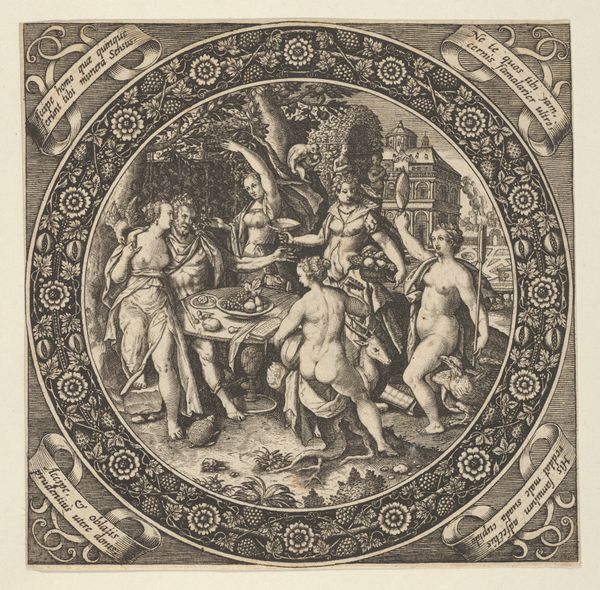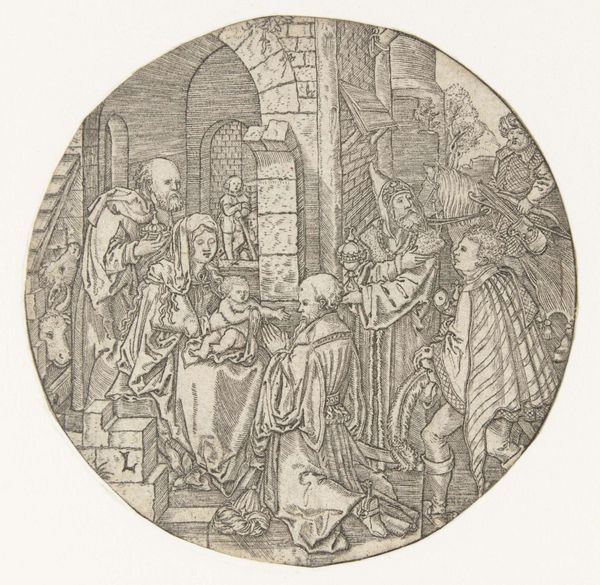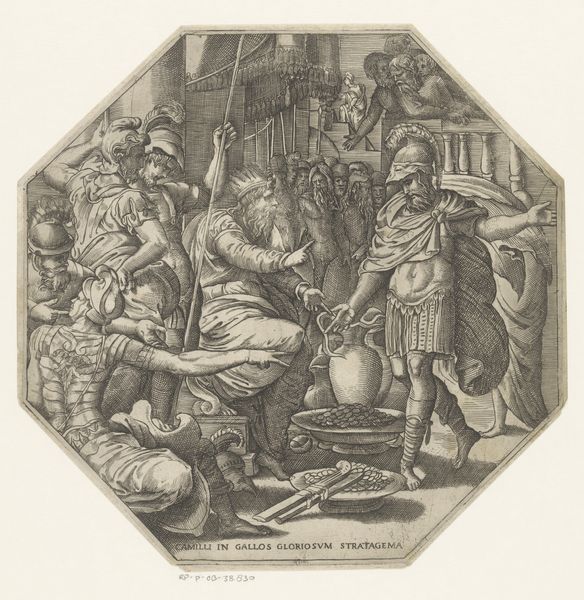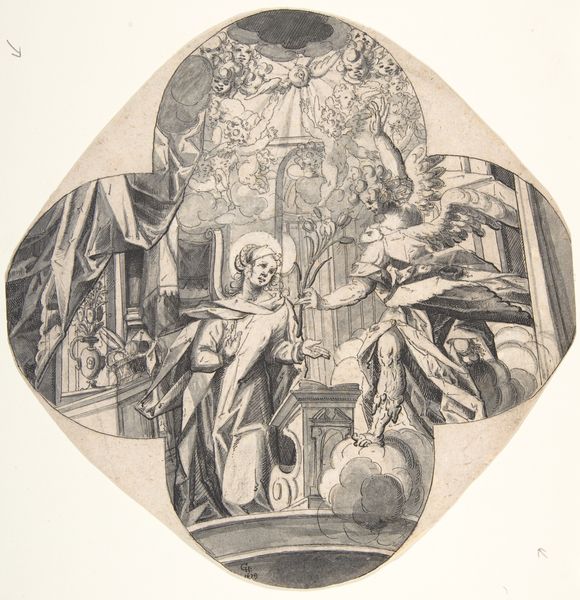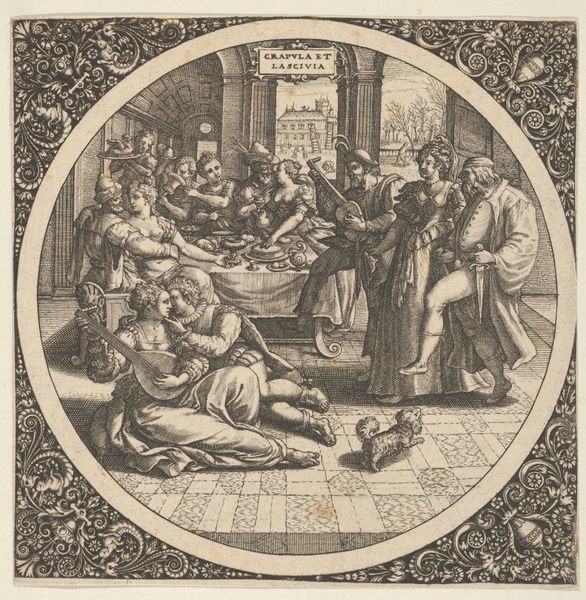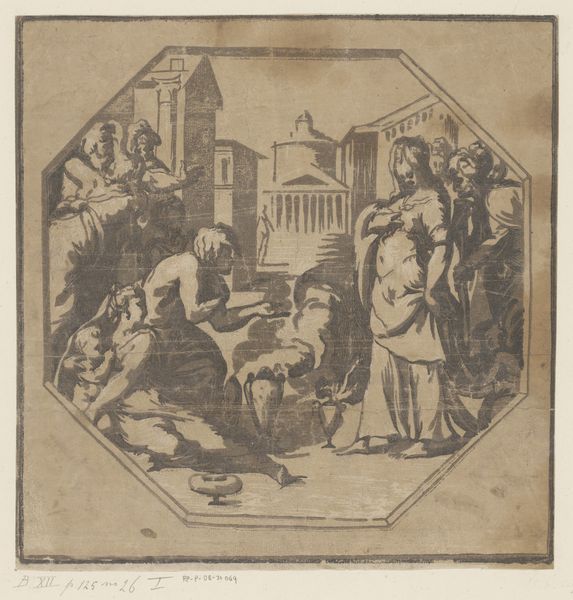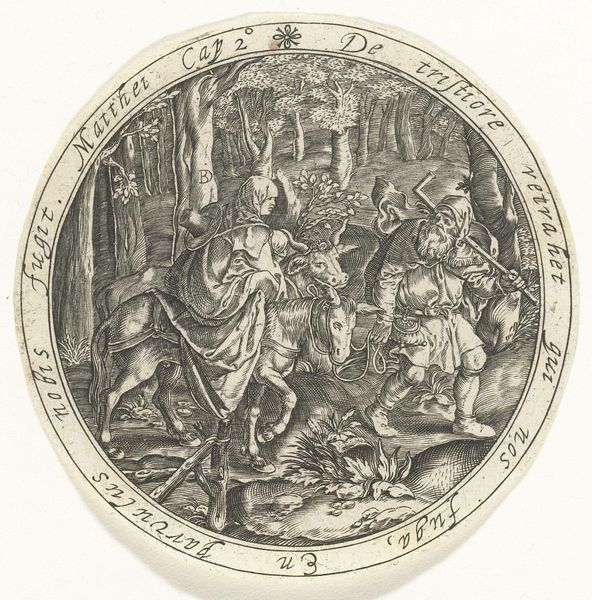
print, pen, engraving
#
narrative-art
#
baroque
# print
#
old engraving style
#
figuration
#
pen-ink sketch
#
traditional style
#
limited contrast and shading
#
pen work
#
pen
#
history-painting
#
engraving
Dimensions: height 207 mm, width 188 mm
Copyright: Rijks Museum: Open Domain
Curator: What grabs me about Jakob de Zetter's "Caius Mucius Scaevola steekt zijn hand in het vuur," created somewhere between 1583 and 1650, is how much action he manages to squeeze into this print. It's teeming with figures, drama bursting at the seams! Editor: Teeming indeed! My initial impression is one of ordered chaos. The stark lines, the almost clinical presentation of a profoundly irrational act... it's quite arresting. The engraving medium lends itself well to this paradox, don't you think? Curator: Absolutely. The crisp lines sharpen the drama, right? You get the story unfolding almost frame by frame, from the would-be assassin’s blunder to his defiant act of self-punishment. It’s all about layering. The Baroque loved that over-the-top flair, you know? The sheer spectacle of human will tested under fire... metaphorically and, in this case, literally! Editor: Yes, the circular composition seems deliberate in intensifying the tension and focus. It compels our gaze toward the protagonist’s searing pain, doesn’t it? This is also amplified via semiotic encoding of gesture and symbolic space to signal hierarchies. It is very good at making viewers feel that something consequential happens on the stage, at the table in the center. Curator: Speaking of hierarchy, have you seen the details around Scaevola, all in armor? It speaks volumes about power and sacrifice in old Rome. Plus, De Zetter makes him almost a Christ-like figure. See how all the onlookers gaze transfixed as if witnessing a religious ritual. Editor: An intriguing reading! However, the scene contains a very limited tonal range with shading achieved merely via the density of the lines. That may indicate the era, with its typical embrace of contrasts to draw meaning to the surface and generate affects in us, spectators of this historical act. I find this print a study in moral and psychological control. Curator: Control, yes, but also about pure guts, if you allow me. The guy misses killing the enemy king and says "Oops, my bad," and then sticks his hand in a fire to show no remorse! It shows Rome's fortitude during the war. Editor: I suppose if you approach the print as a window to this ancient narrative, it provides much to learn on the aesthetic expression of grand concepts. Curator: Grand concepts rendered by pen strokes... Now, isn't that the beauty of narrative art at its finest?
Comments
No comments
Be the first to comment and join the conversation on the ultimate creative platform.

